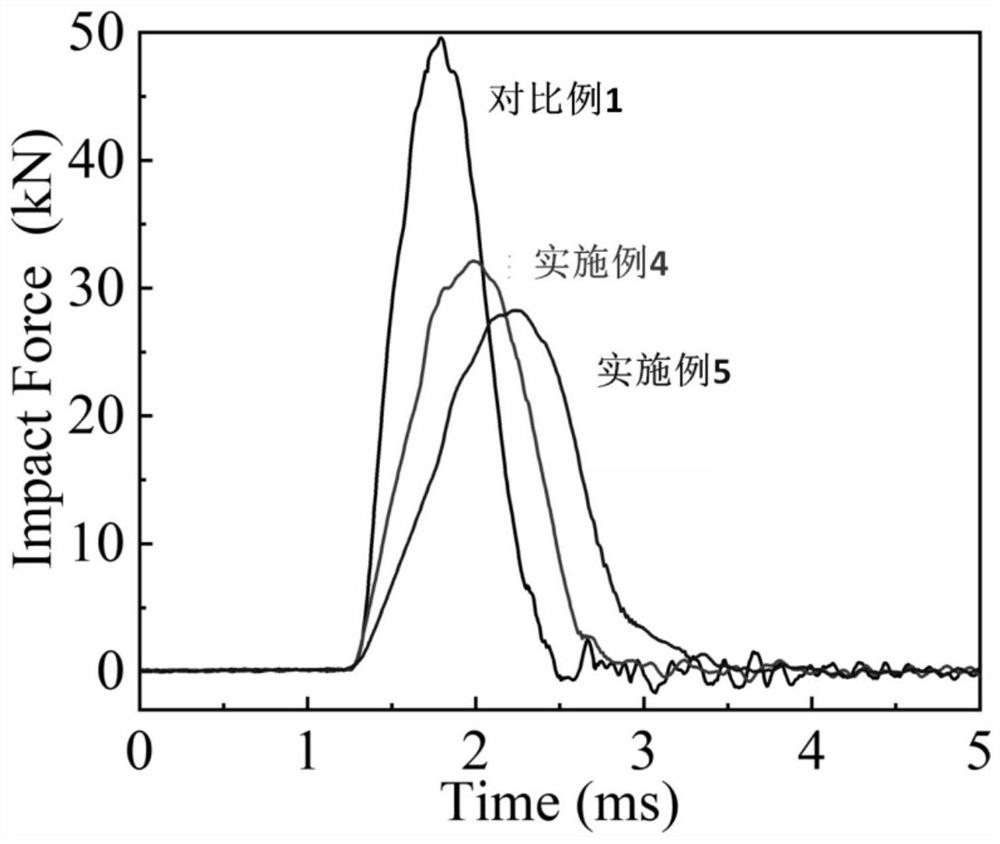Shock-resistant protective material based on thermoplastic elastomer and preparation method of shock-resistant protective material
A thermoplastic elastomer and protective material technology, applied in the field of organic materials, can solve problems such as non-reusability, poor protective ability of foam pads, and uncomfortable hard shells.
- Summary
- Abstract
- Description
- Claims
- Application Information
AI Technical Summary
Problems solved by technology
Method used
Image
Examples
preparation example Construction
[0063] The present invention also provides a preparation method of the thermoplastic elastomer-based impact-resistant protective material described in the above technical solution, comprising:
[0064] The styrene-based thermoplastic elastomer A, the styrene-based thermoplastic elastomer B and polyborosiloxane are mixed, and then pressed and molded to obtain an impact-resistant protective material.
[0065] In the present invention, the above-mentioned preparation process preferably specifically includes the following steps:
[0066] a) mixing the styrene-based thermoplastic elastomer A and the styrene-based thermoplastic elastomer B to obtain a blend;
[0067] b) extruding and mixing the blend and polyborosiloxane through a twin-screw extruder to obtain an extrusion mixed material;
[0068] c) Pressing the extruded mixed material with a flat vulcanizing agent to obtain an impact-resistant protective material.
[0069] Wherein, the types and dosages of the styrene-based ther...
Embodiment 1
[0078] 1. Preparation of polyborosiloxane:
[0079] Using dihydroxy-terminated polydimethylsiloxane (Sigma Aldrich, viscosity 1800-2200 centistokes dihydroxy-terminated polydimethylsiloxane) with a number average molecular weight of 53000 g / mol, boric acid and dihydroxy-terminated polydimethylsiloxane The polydimethylsiloxane at the end was mixed according to the molar ratio of 0.8:1. After stirring and reacting at 120°C for 48 hours, the obtained crude product was filtered in tetrahydrofuran to remove unreacted boric acid (the ratio of tetrahydrofuran to crude product was 10 mL: 1g), and then evaporate the solvent to obtain polyborosiloxane.
[0080] The reciprocal of the crossover frequency of the storage modulus G' and the loss modulus G" of the above-mentioned polyborosiloxane was measured by linear frequency sweep, and the results showed that the relaxation time of the prepared polyborosiloxane was 0.1s.
[0081] 2. Preparation of impact-resistant protective materials: ...
Embodiment 2
[0090] 1. Preparation of polyborosiloxane:
[0091] Using dihydroxyl-terminated polydimethylsiloxane with a number average molecular weight of 7700 g / mol (Sigma Aldrich, dihydroxyl-terminated polydimethylsiloxane with a viscosity of 65 centistokes), boric acid and dihydroxyl-terminated polydimethylsiloxane Dimethylsiloxane was mixed according to the feeding molar ratio of 1.2:1. After stirring and reacting at 120°C for 48 hours, the obtained crude product was filtered in tetrahydrofuran to remove unreacted boric acid (the ratio of tetrahydrofuran to crude product was 10mL:1g) , and then evaporate the solvent to obtain polyborosiloxane.
[0092] The reciprocal of the crossover frequency of the storage modulus G' and the loss modulus G" of the above-mentioned polyborosiloxane was measured by linear frequency sweep, and the results showed that the relaxation time of the prepared polyborosiloxane was 1.5s.
[0093] 2. Preparation of impact-resistant protective materials:
[0094...
PUM
| Property | Measurement | Unit |
|---|---|---|
| glass transition temperature | aaaaa | aaaaa |
| glass transition temperature | aaaaa | aaaaa |
| hardness | aaaaa | aaaaa |
Abstract
Description
Claims
Application Information
 Login to View More
Login to View More - R&D
- Intellectual Property
- Life Sciences
- Materials
- Tech Scout
- Unparalleled Data Quality
- Higher Quality Content
- 60% Fewer Hallucinations
Browse by: Latest US Patents, China's latest patents, Technical Efficacy Thesaurus, Application Domain, Technology Topic, Popular Technical Reports.
© 2025 PatSnap. All rights reserved.Legal|Privacy policy|Modern Slavery Act Transparency Statement|Sitemap|About US| Contact US: help@patsnap.com



